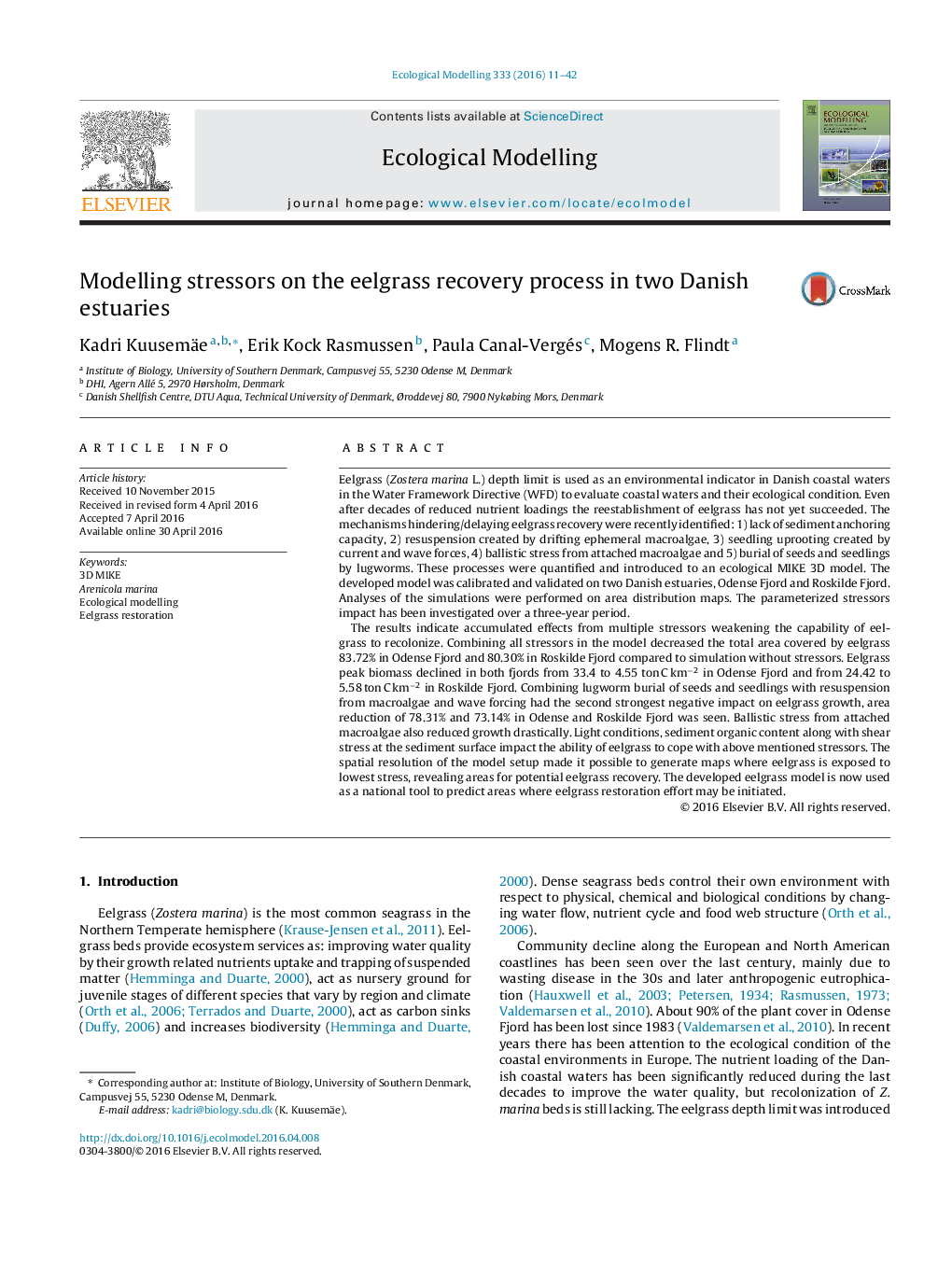| Article ID | Journal | Published Year | Pages | File Type |
|---|---|---|---|---|
| 6296113 | Ecological Modelling | 2016 | 32 Pages |
Abstract
The results indicate accumulated effects from multiple stressors weakening the capability of eelgrass to recolonize. Combining all stressors in the model decreased the total area covered by eelgrass 83.72% in Odense Fjord and 80.30% in Roskilde Fjord compared to simulation without stressors. Eelgrass peak biomass declined in both fjords from 33.4 to 4.55 ton C kmâ2 in Odense Fjord and from 24.42 to 5.58 ton C kmâ2 in Roskilde Fjord. Combining lugworm burial of seeds and seedlings with resuspension from macroalgae and wave forcing had the second strongest negative impact on eelgrass growth, area reduction of 78.31% and 73.14% in Odense and Roskilde Fjord was seen. Ballistic stress from attached macroalgae also reduced growth drastically. Light conditions, sediment organic content along with shear stress at the sediment surface impact the ability of eelgrass to cope with above mentioned stressors. The spatial resolution of the model setup made it possible to generate maps where eelgrass is exposed to lowest stress, revealing areas for potential eelgrass recovery. The developed eelgrass model is now used as a national tool to predict areas where eelgrass restoration effort may be initiated.
Keywords
Related Topics
Life Sciences
Agricultural and Biological Sciences
Ecology, Evolution, Behavior and Systematics
Authors
Kadri Kuusemäe, Erik Kock Rasmussen, Paula Canal-Vergés, Mogens R. Flindt,
